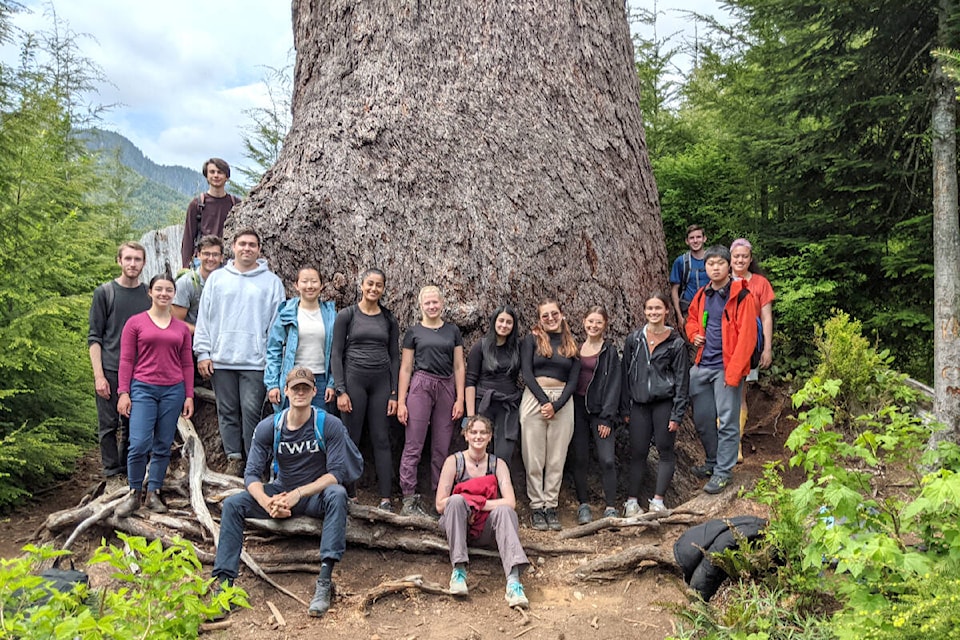By David Clements/Special to Langley Advance Times
Last month I took my Trinity Western University (TWU) plant ecology class of 18 students over to Vancouver Island, home of some of the world’s most renown coastal rainforests.
The class was based on Salt Spring Island, where we visited many second-growth forests, Garry oak savannahs on the TWU Crow’s Nest Ecological Research Area, and an eco-forestry site, Seven Ravens.
Nothing could quite prepare us for the coastal rainforest we immersed ourselves in called Eden Grove.
It was a forest of giant cedar and Douglas fir trees, interspersed with a lush and diverse understory, and featuring a soundscape of sonorous bird song.
The group of students leading lunchtime devotions sent us out to spend a blissful half hour in contemplation and prayer in this magical forest.
One valley east of Eden Grove lies the Fairy Creek watershed, site of one of the largest logging protests in Canadian history, with more than 1,000 protestors arrested between 2020 and 2022.
The protestors were hoping to stop the logging of Fairy Creek old-growth forest – like the forest we saw in Eden Grove.
So much for serenity.
Even closer to Eden Grove stands “Big Lonely Doug,” the second largest Douglas fir in Canada, measuring 12 metres in circumference, 70 m tall, and is estimated to be more than 1,000 years old.
Big Lonely Doug towers over an area clear cut in 2012.
This tree, saved by a surveyor who wrapped green tape labelled with the words “leave tree,” now has become a symbol of forest conservation in Canada and subject of the book “Big Lonely Doug: The Story of One of Canada’s Last Great Trees,” by Harley Rustad.
As my class and I encountered Big Lonely Doug, we experienced a very different vibe than the calm of being enveloped in nearby Eden Grove.
As Suzanne Simard writes about in her book “Finding the Mother Tree,” the trees of a Pacific coast rainforest are naturally entwined with each other, linked together by a myriad of mycorrhizal fungal fibres that allow the trees to “talk” to each other.
Big Lonely Doug’s family members are gone, silenced.
In June 2021, logging in the Fairy Creekw watershed was paused for two years by the B.C. government, in response from a request by Pacheedaht, Ditidaht, and Huu-ay-aht First Nations.
June 2, 2023, the B.C. government extended the deferral for old-growth harvesting in the Fairy Creek watershed to February 1, 2025.
What if the continuing deferral does not last indefinitely?
My plant ecology students and I now have a clear picture of the two possible futures.
– David Clements PhD, is a professor of biology and environmental studies at Trinity Western University
RECENT GREEN BEAT: Toothless crocodiles still bite
.
Have a story tip? Email: news@langleyadvancetimes.com
Like us on Facebook and follow us on Twitter.
